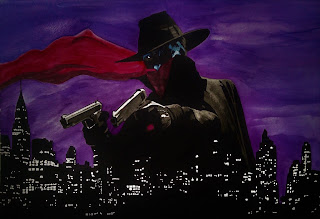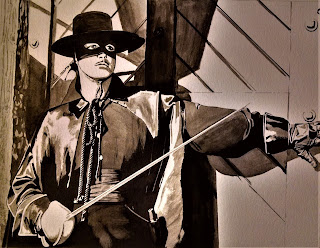
LEGENDARY HEROES #6 THE SHADOW Street & Smith was the country's oldest and largest publisher of pulp magazines. One of their titles, Detective Story Magazine, was experiencing declining sales. In an effort to boost sales Street & Smith decided upon a radio show that would promote the pulp. The publishers enlisted an ad agency and a writer-director to adapt stories from the magazine into a radio series. The creative team hit upon the idea of having the stories narrated by a mysterious storyteller with a sinister voice. Seeking an appropriate name for the mysterious narrator they came up with The Shadow. On July 31, 1930, the Detective Story Hour debuted on radio with veteran voice actor Frank Readick supplying the hauntingly sibilant narration. Radio listeners were thrilled and the program became a national sensation. The show aired on Sunday evenings at 5:30 and listeners were soon demanding from their local news dealers cop...




